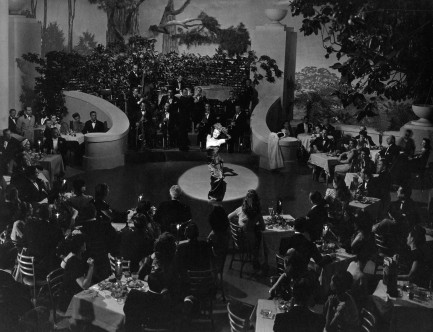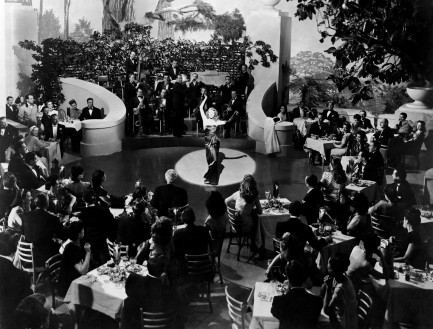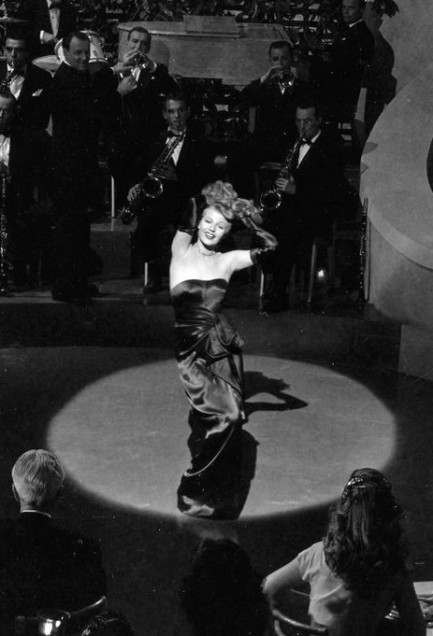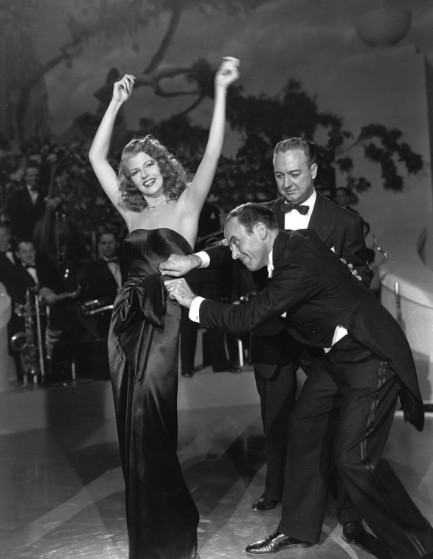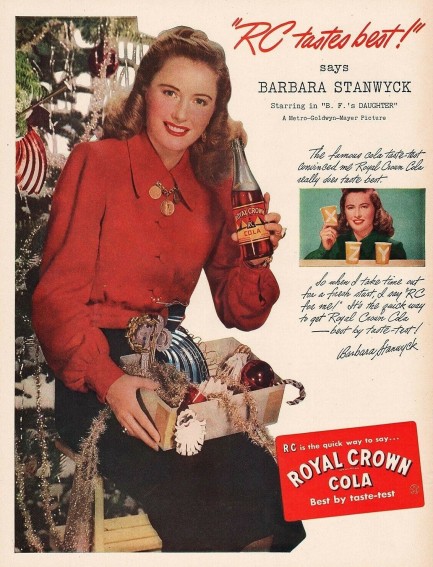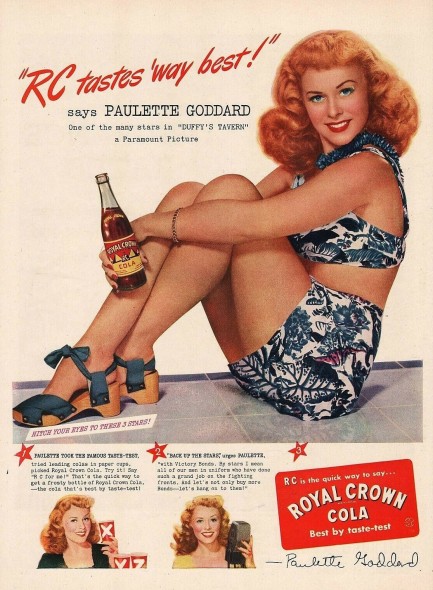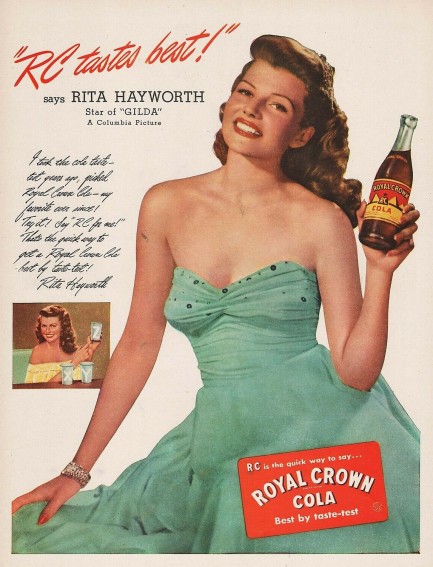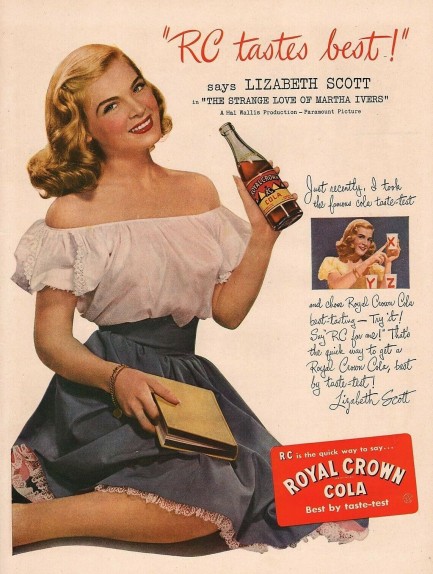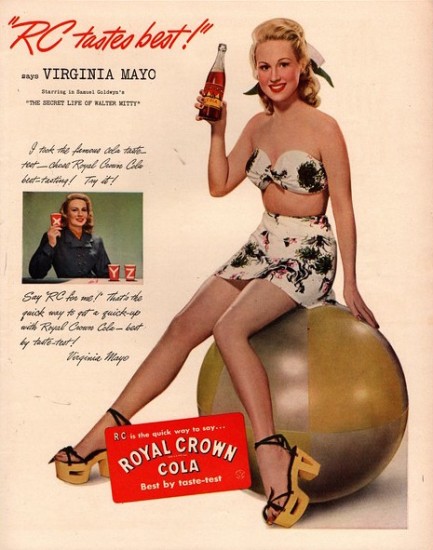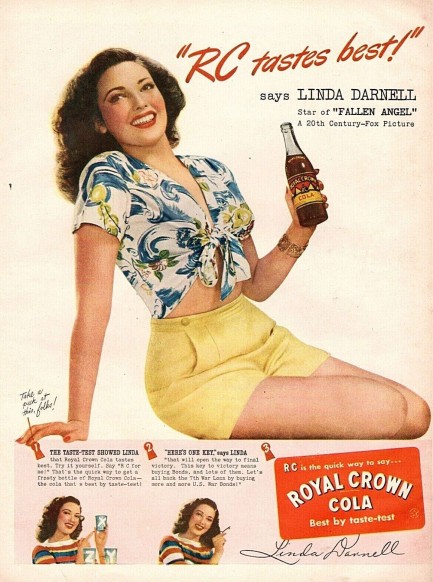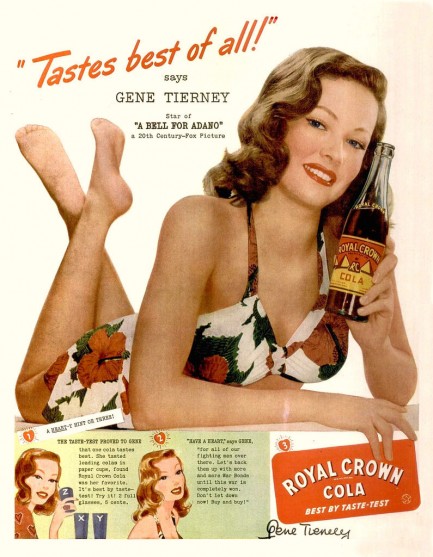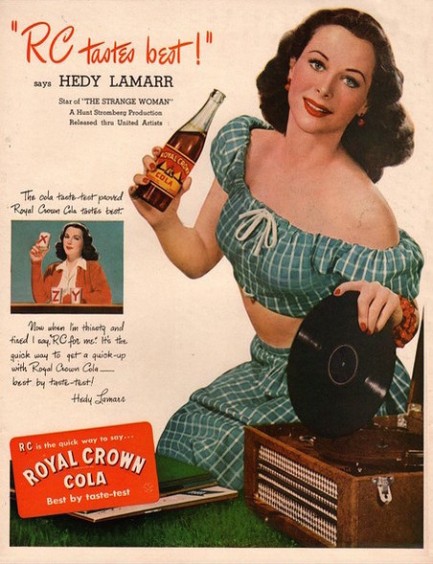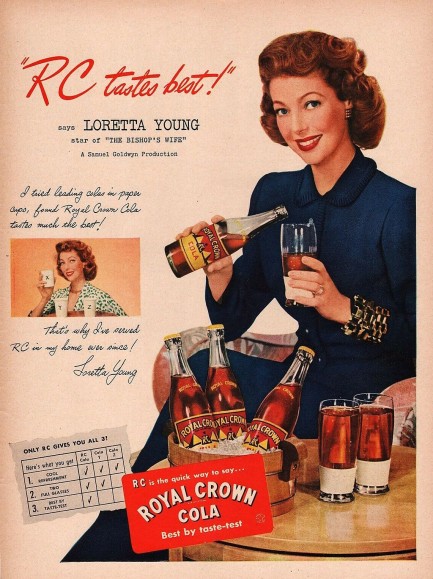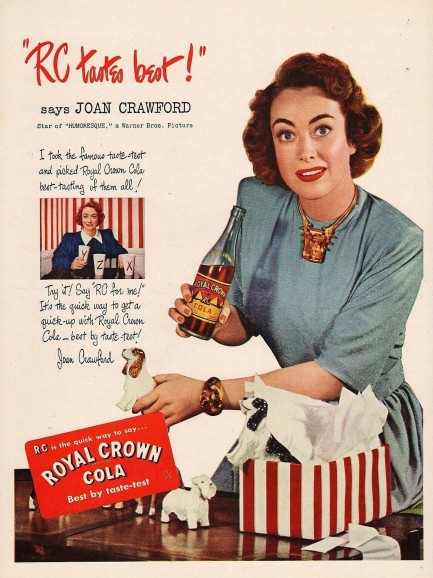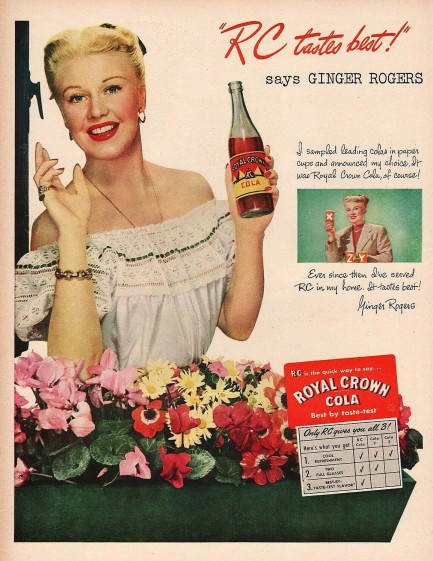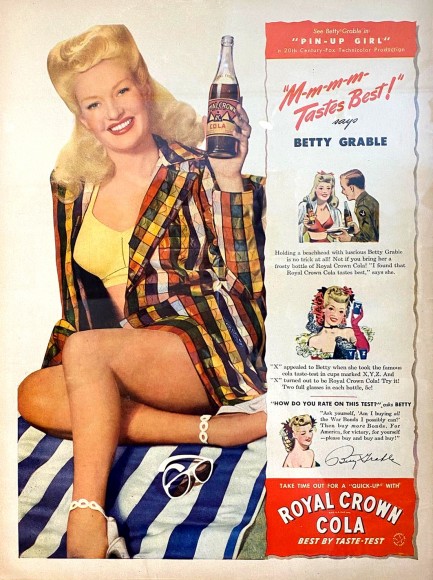 It's an extravagant look because if she ever needs to shoot someone she wants them to notice the gun last. 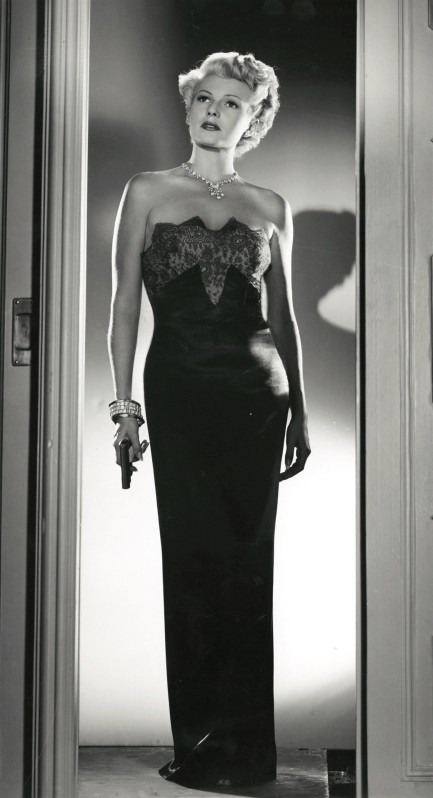
Above is a publicity image featuring the legendary Rita Hayworth made when she was filming 1947's The Lady from Shanghai. We shared a promo from the movie several years back. This is another frame from the same session, showing Hayworth in the same slippery sheath. She plays a slippery character too.
 Strange ideas from the minds and lenses of mid-century promo photographers. 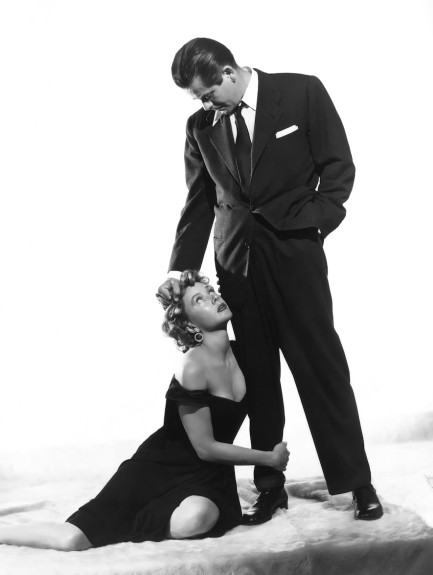 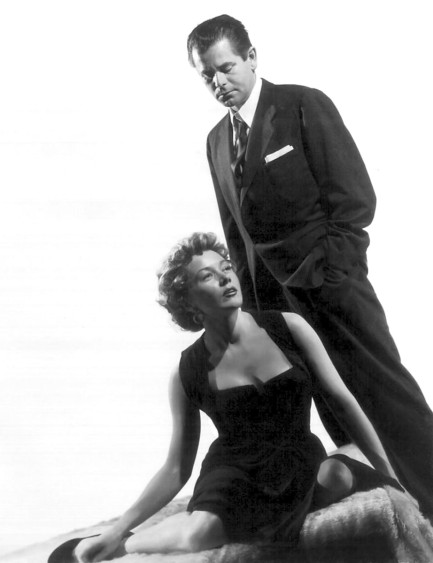 A while back we shared a promo photo of Glenn Ford and Gloria Grahame from 1953's The Big Heat that was meant to imply oral sex (it absolutely was, and you can see for yourself here). We commented on its weirdness, and noted that an actress would probably not be asked or made to pose that way today. The shot got us thinking about whether there were other kneeling promo shots from the mid-century era, and above you see two others from The Big Heat. Below we have more such shots, and while none are as jarring as that previous promo, they're all interesting. We assumed there would be few if any featuring kneeling males, but we found a couple. Even so, there are probably scores more kneeling actresses that we missed. While many of shots took the form they did to highlight the criminal/victim themes in their parent films, you still have to wonder what else—consciously or not—was in the various photograhers' minds. Anyway, just some food for thought this lovely Thursday. Ready, set discuss! 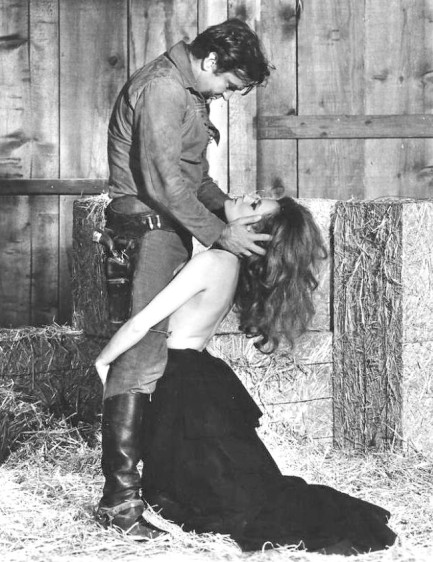 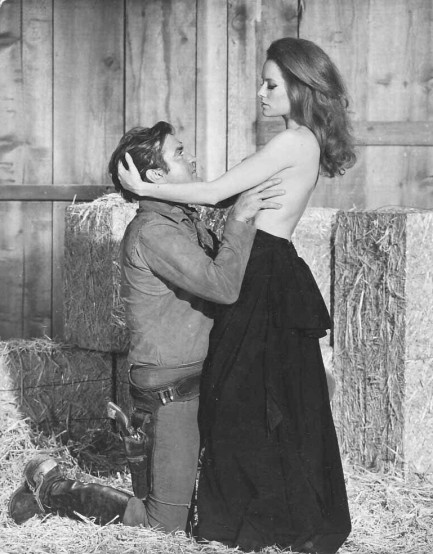 Rod Taylor and Luciana Pauluzzi swap subordinate positions for 1967's Chuka. Rod Taylor and Luciana Pauluzzi swap subordinate positions for 1967's Chuka.
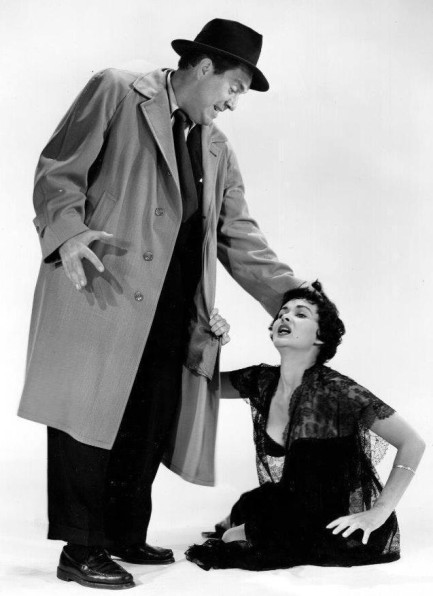 Edmund O'Brien goes for the time honored hair grab on Marla English for 1954's Shield for Murder. Edmund O'Brien goes for the time honored hair grab on Marla English for 1954's Shield for Murder.
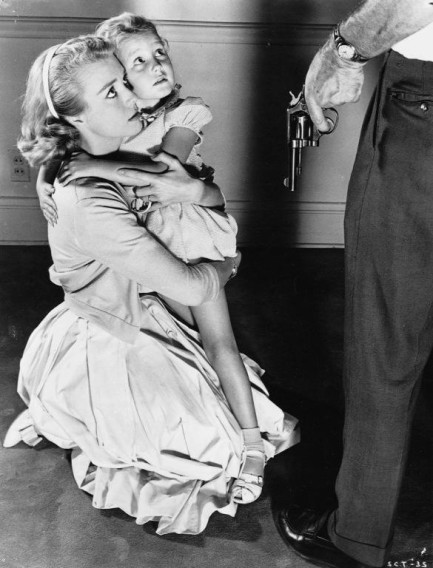 Inger Stevens and Terry Ann Ross for Cry Terror, an adaptation of a novel we talked about a few years ago. Inger Stevens and Terry Ann Ross for Cry Terror, an adaptation of a novel we talked about a few years ago.
 Kim Hunter soothes an overheated Marlon Brando in a promo for 1951's A Streetcar Named Desire. Kim Hunter soothes an overheated Marlon Brando in a promo for 1951's A Streetcar Named Desire.
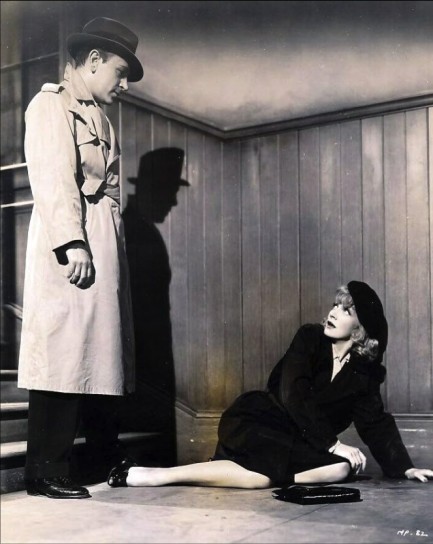 George Raft menaces Marlene Dietrich in the 1941 comedy Manpower. George Raft menaces Marlene Dietrich in the 1941 comedy Manpower.
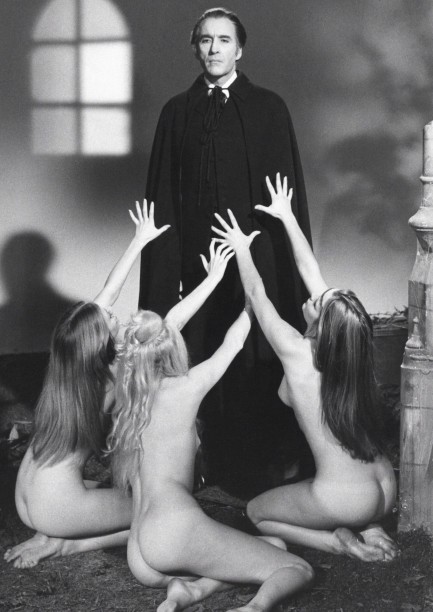 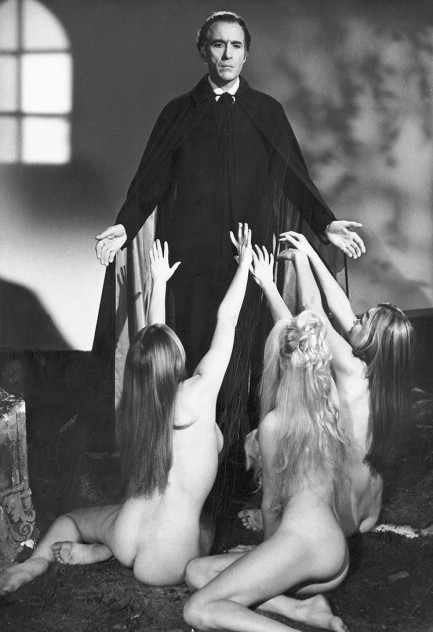 As promos go, these actually make sense. They show three unidentified models mesmerized by vampire Christopher Lee for 1970's Taste the Blood of Dracula. As promos go, these actually make sense. They show three unidentified models mesmerized by vampire Christopher Lee for 1970's Taste the Blood of Dracula.
 Glenn Ford is at it again, this time looming over Rita Hayworth for the 1946 classic Gilda. Glenn Ford is at it again, this time looming over Rita Hayworth for the 1946 classic Gilda. 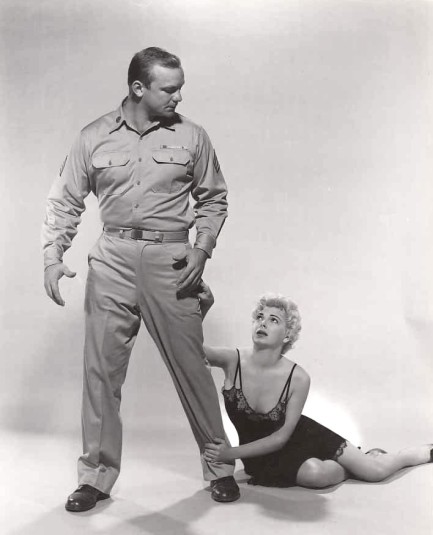 Aldo Ray and Barbara Nichols for 1958's The Naked and the Dead. Aldo Ray and Barbara Nichols for 1958's The Naked and the Dead.
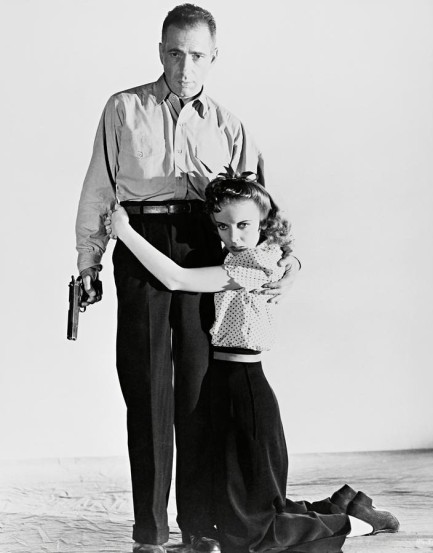 This one shows less domination and more protectiveness, as Humphrey Bogart prepares to defend Ida Lupino for High Sierra, 1941. This one shows less domination and more protectiveness, as Humphrey Bogart prepares to defend Ida Lupino for High Sierra, 1941.
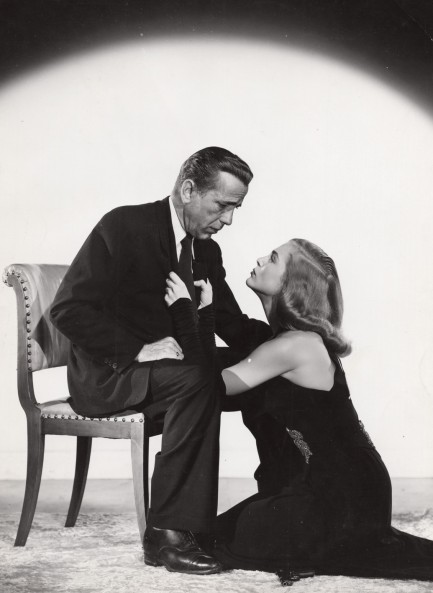 Humphrey once more. Here he's with Lizabeth Scott for Dead Reckoning, 1947. Humphrey once more. Here he's with Lizabeth Scott for Dead Reckoning, 1947.
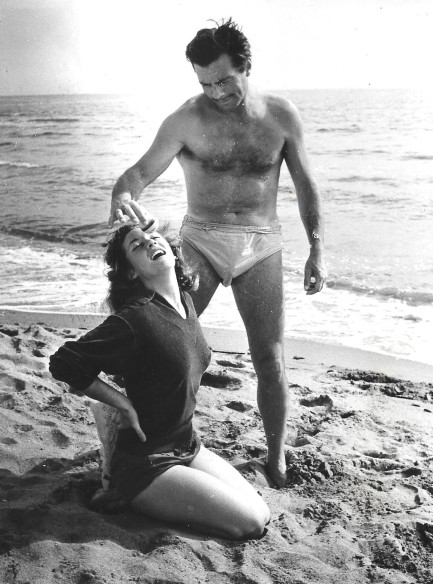 This shot shows Brazilian actress Fiorella Mari with an actor we can't identify in a movie we also can't identify. This shot shows Brazilian actress Fiorella Mari with an actor we can't identify in a movie we also can't identify.
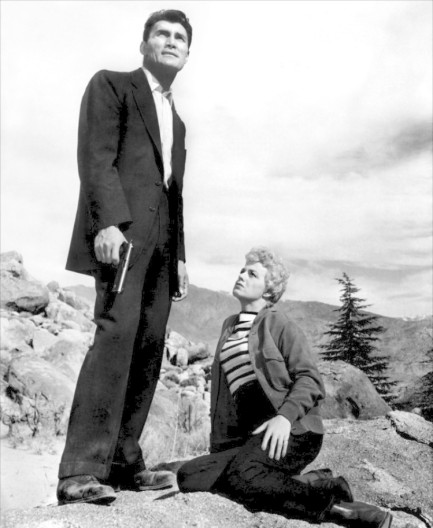 Shelly Winters and Jack Palance climb the highest mountain together for I Died a Thousand Times, 1955. Shelly Winters and Jack Palance climb the highest mountain together for I Died a Thousand Times, 1955.
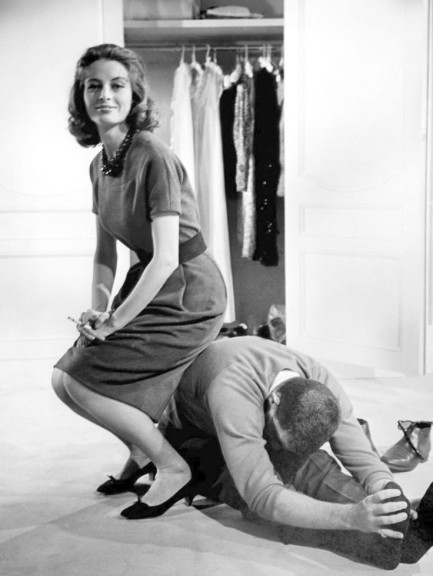 As we said, we didn't find as many examples of kneeling men, but we found this gem—Cappucine makes a seat of director Blake Edwards on the set of The Pink Panther in 1963. Does this count, though? While Edwards is subordinate, he isn't kneeling and it really isn’t a legit promo. As we said, we didn't find as many examples of kneeling men, but we found this gem—Cappucine makes a seat of director Blake Edwards on the set of The Pink Panther in 1963. Does this count, though? While Edwards is subordinate, he isn't kneeling and it really isn’t a legit promo.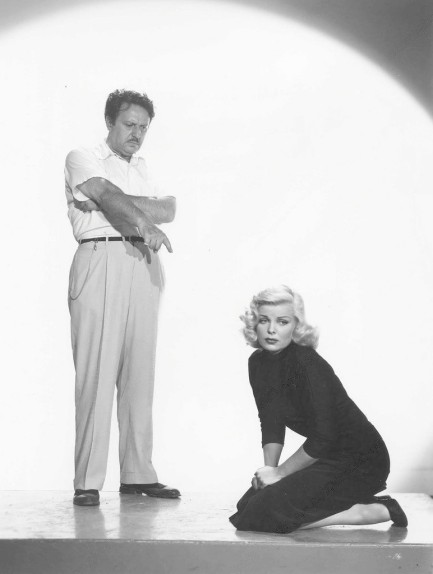 And lastly, in a curious example, Hugo Haas seems to tell Cleo Moore to stay in a shot made for 1953's One Girl's Confession. And lastly, in a curious example, Hugo Haas seems to tell Cleo Moore to stay in a shot made for 1953's One Girl's Confession.
 When you're a movie star you can't simply have a bad day. 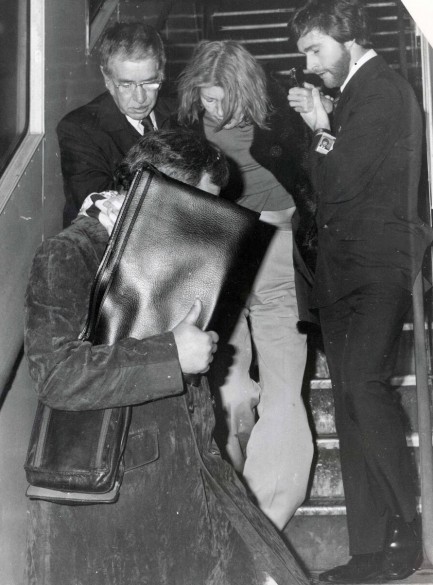
When you're a celebrity, even in professional decline or retirement, you can always make news with a public misstep. Such was the case with Rita Hayworth when she was helped from a TWA flight after it landed in London today in 1976. Hayworth had caused a disruption by directing an angry outburst at a flight attendant. The press was on hand at the airport, so Hayworth was photographed from arrival terminal to limousine looking as tired as if she'd walked instead of flown to London.
It was bad day for Hayworth, but it was only the latest in a long run of them. She had been deeply affected by both her brothers dying within a week in March 1974, had been drinking heavily since then, and in fact was allegedly intoxicated on the flight. When news of the disturbance hit the papers she took a public relations beating and, of course, back then the press wasn't circumspect about attacking a woman's looks.
It wasn't until several years later that Hayworth was diagnosed with the still largely unknown ailment Alzheimer's disease, which helped explain her increasingly erratic behavior. Aging is difficult, there's little doubt. Aging as a sex symbol must be incredibly hard. Some would say growing old in public is back payment for fame, fortune, and undeserved adoration, and that may be so, but to us it seems like a mighty high price. We have a few more photos below.
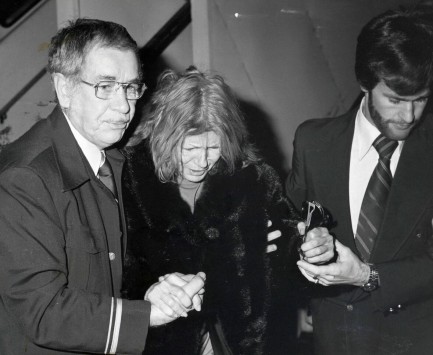 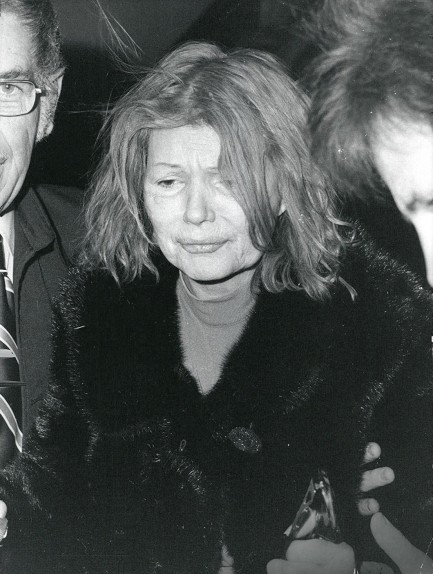 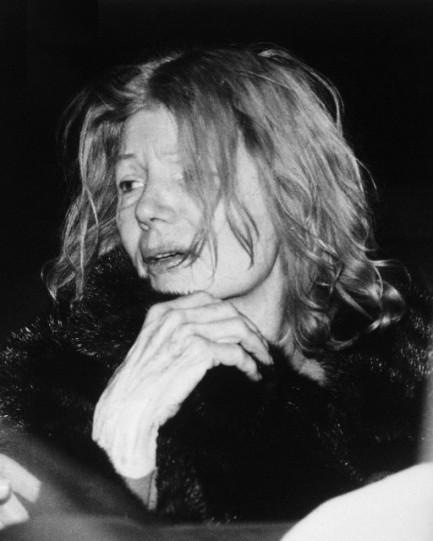
 Columbia Pictures gives moviegoers a fuller picture of one of its top stars. 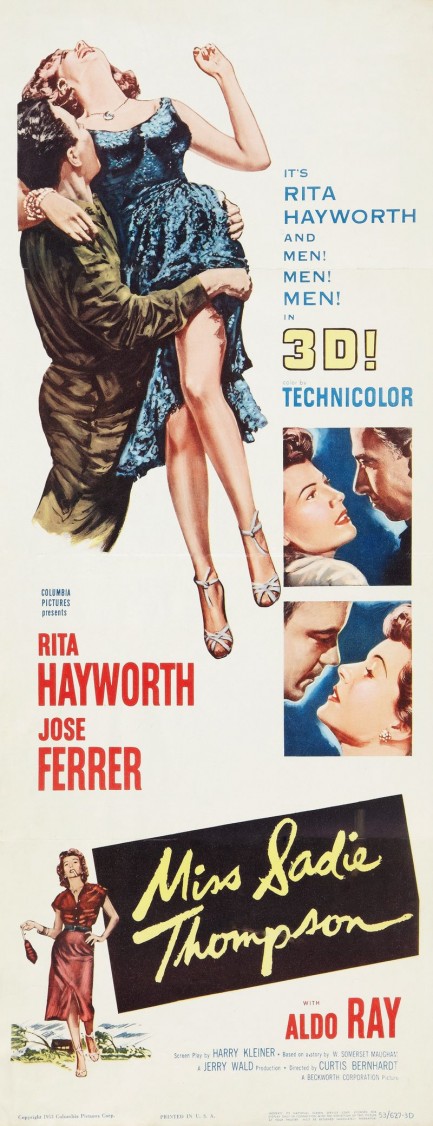
Above is a poster advertising the drama Miss Sadie Thompson. When we watched the movie a few years ago we had no idea it had been in 3-D. It seems like a strange choice for such treatment. Now we'll have to watch it again and see what things are thrust at the camera. We're hoping whatever they are, they're all attached to Rita Hayworth. In the meantime, below is a flyer also touting the film's 3-D run. Though it was supposed to premiere “at Christmas,” the American Film Institute tells us it actually first showed on December 23 in New York City, before receiving a nationwide opening in February 1954. The phrase “at Christmas,” we suppose, might imply anytime during the season. Sadie Thompson is an interesting movie, though not Hayworth's best. You can read our pithy thoughts here.
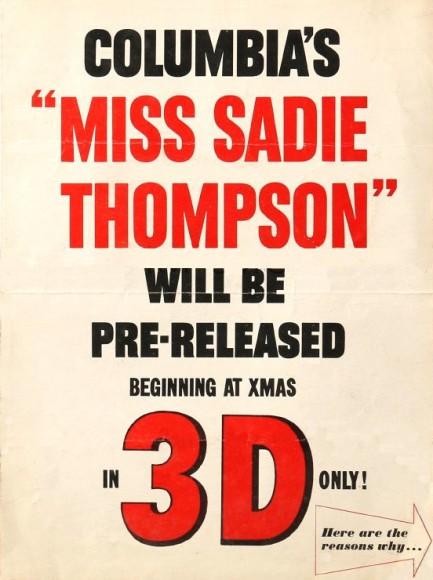
 Rita Hayworthová was worth the wait. 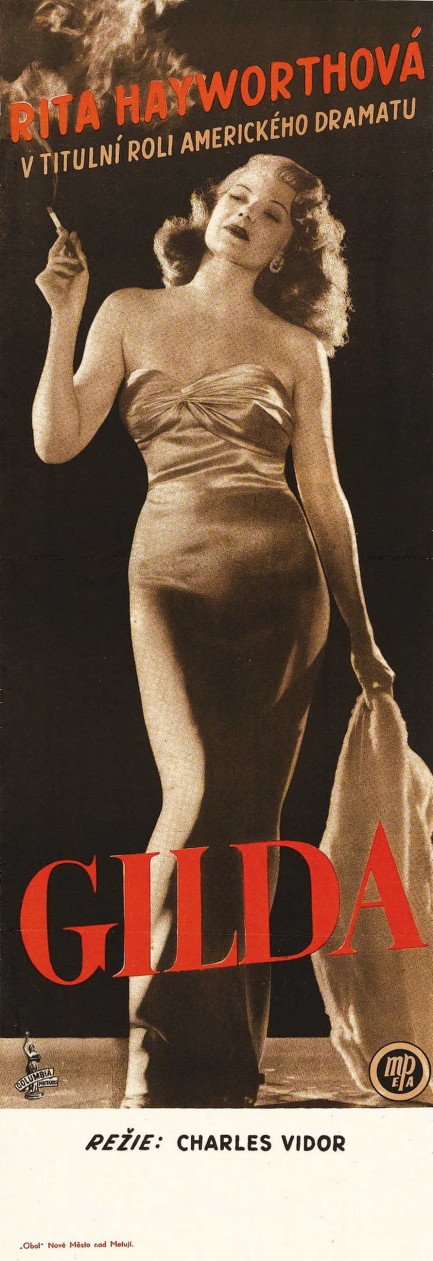
This Czech poster for the film noir classic Gilda isn't substantially different from the U.S. promo, but the Czech text makes it worth a share. Rita Hayworthová? Love it. “V titulní roli americkeho dramatu”? That's easy to figure out—“In the title role of the American drama.” The online translator agreed. There's no Czech release date for this, but we can make a guess. It was released in early 1946, played at the Cannes Film Festival in September of that year, and began to reach secondary European markets in early 1947. So it probably reached then-Czechoslovakia in mid-1947. But whenever it showed up, Hayworthová made it a mandatory night at the movies.
 Picture the entertainment business a lifetime ago. 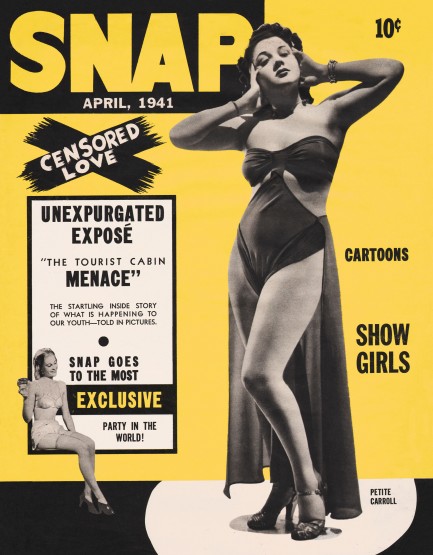
Snap is yet another celeb and film magazine from the mid-century era, the product of the Snap Publishing Company, headquartered not in the usual locale of New York City, but in tiny Mount Morris, Illinois. Back in 1941, when this issue hit newsstands, Mount Morris had a population of only 2,700 people, and even today is home to only 3,000. You're probably thinking it's a really part of Chicago, a suburb within the metropolitan area, but it's actually fifty miles southwest, which was a long way in 1941 over rutted roads in primitive automobiles. Why was Snap based out in Mount Morris? We have no idea. Maybe the owner was inordinately attached to the Illinois Freedom Bell.
Though Snap had offices far afield, its focus was pure Hollywood and NYC., with plenty of celeb action inside each issue. In this one readers got Marion Miller, aka the “Queen of Quiver,” Dale Evans, Lily Damita, Marion Wakefield, Warner Baxter, Rita Hayworth, and many other screen stars and showgirls of the time. Editors also put together a comedic photoplay, notes on recent screen kisses, some kind of cockamamie home health test, and a scare feature on highschoolers going to tourist cabins—i.e. rentals in the woods where they could get laid. We have all that in forty-plus scans below.
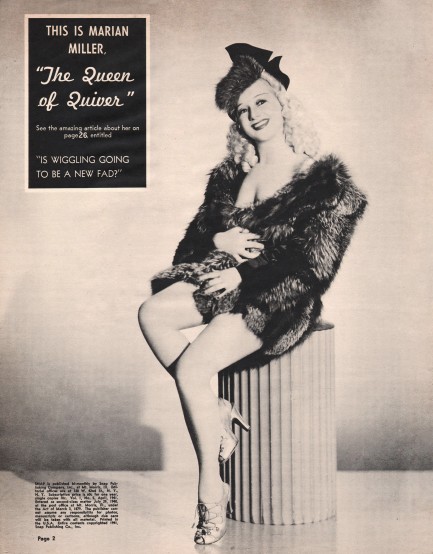 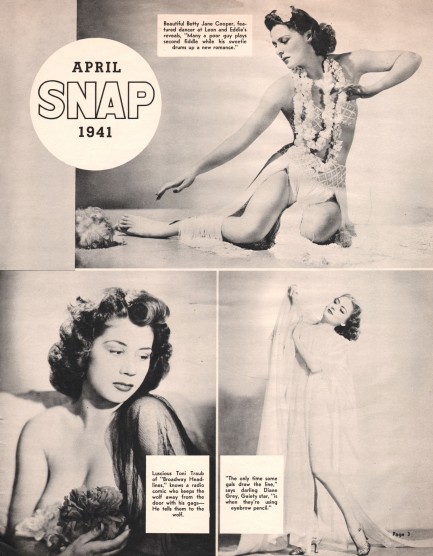 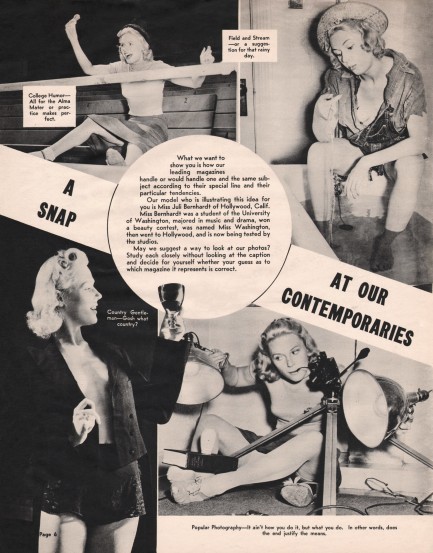 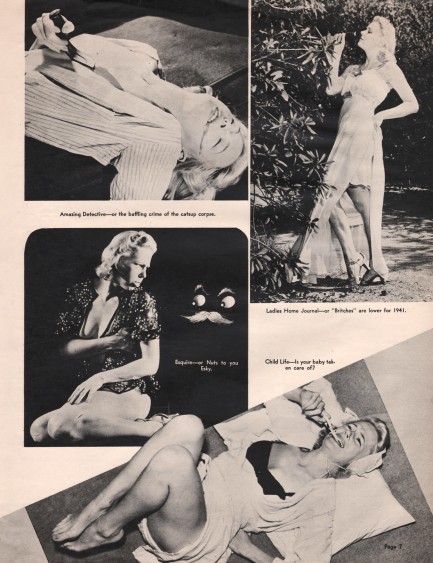 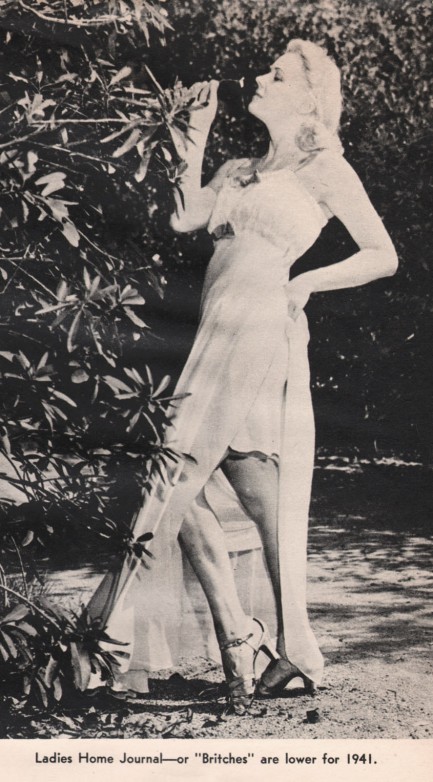 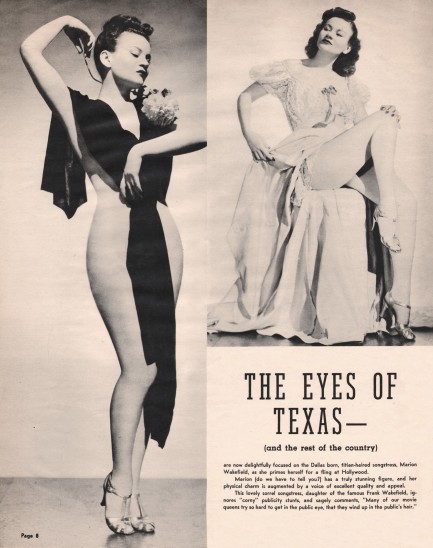 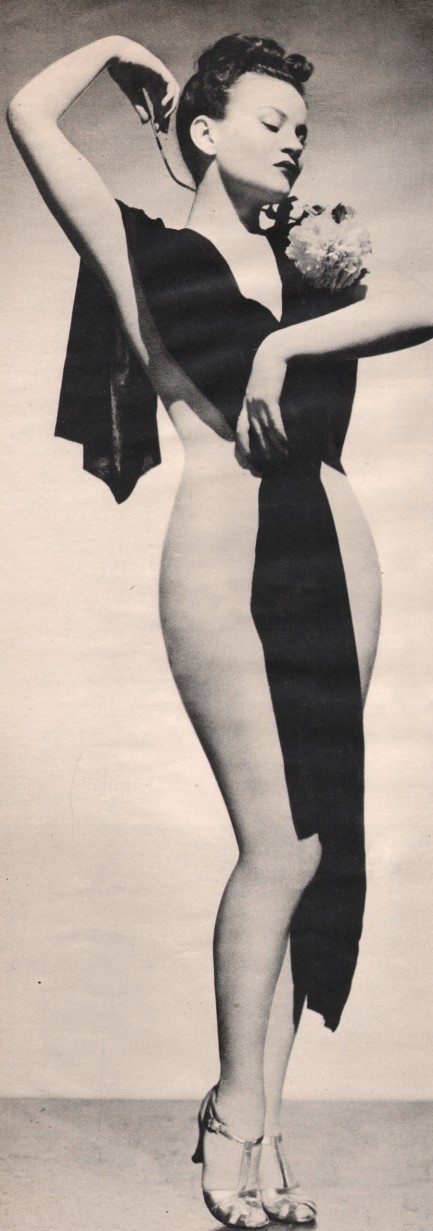 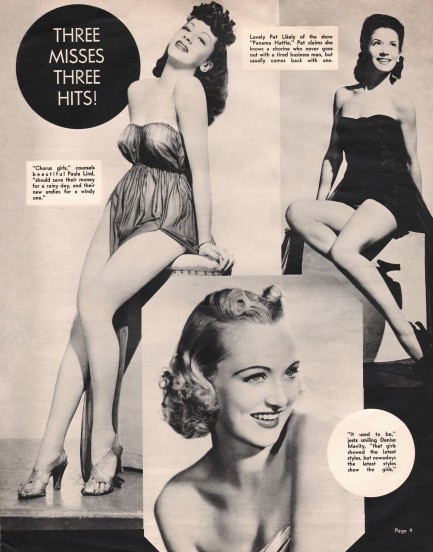 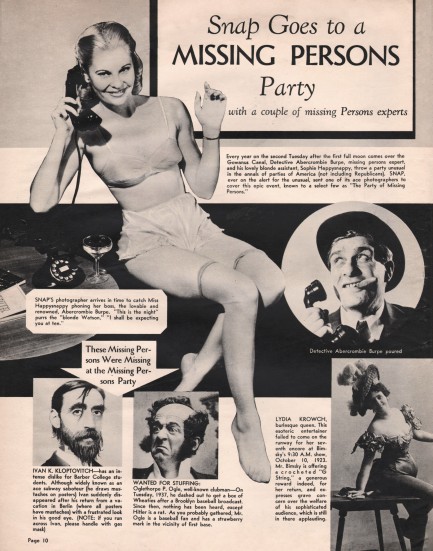 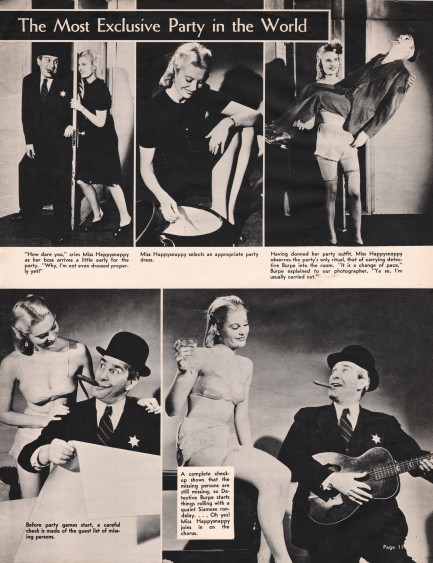 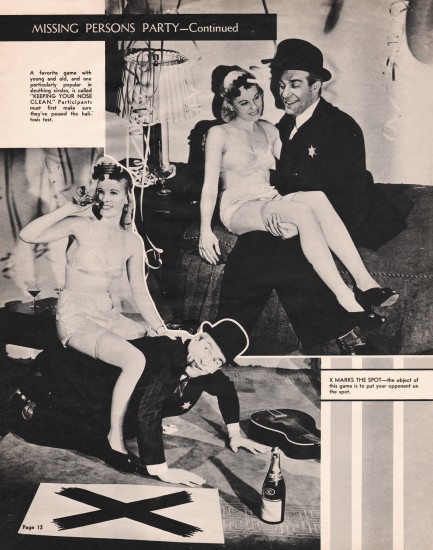 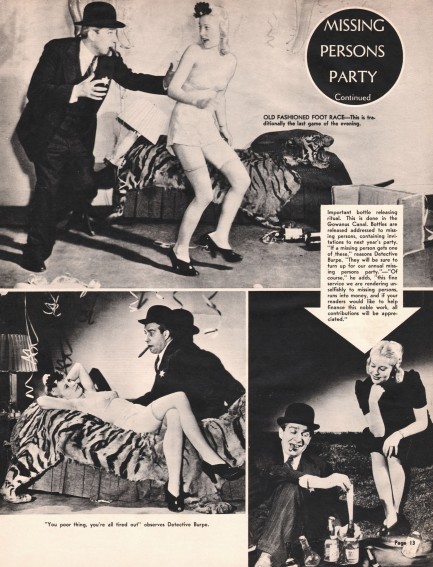 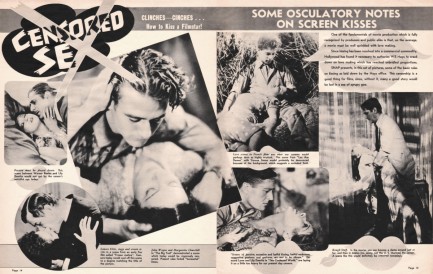 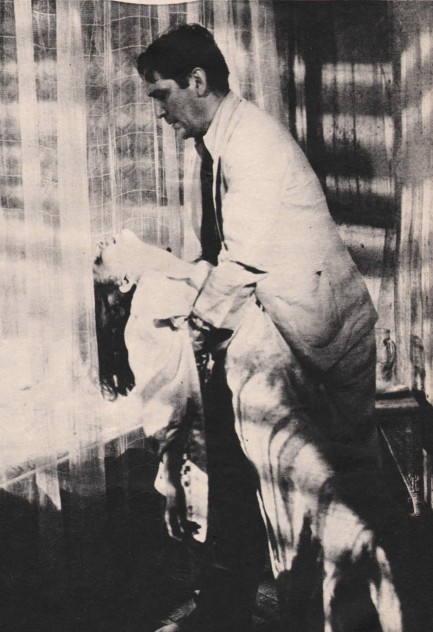 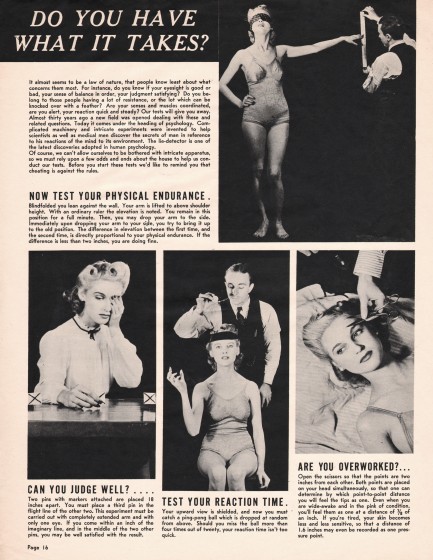 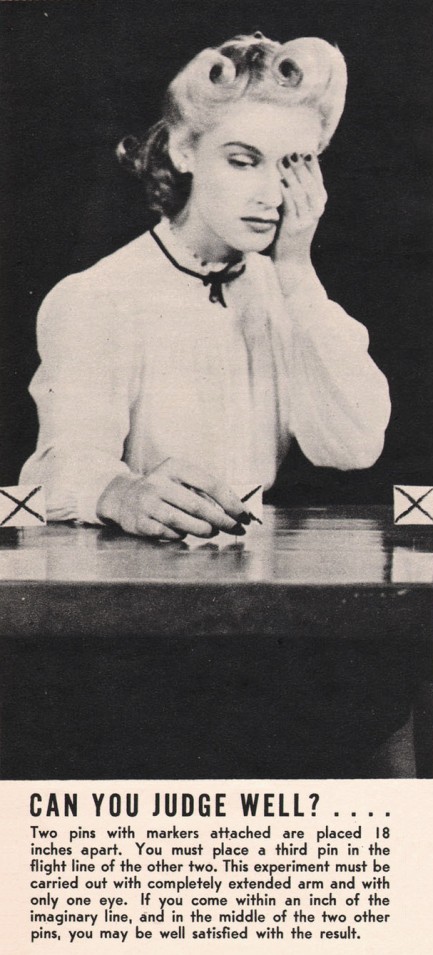 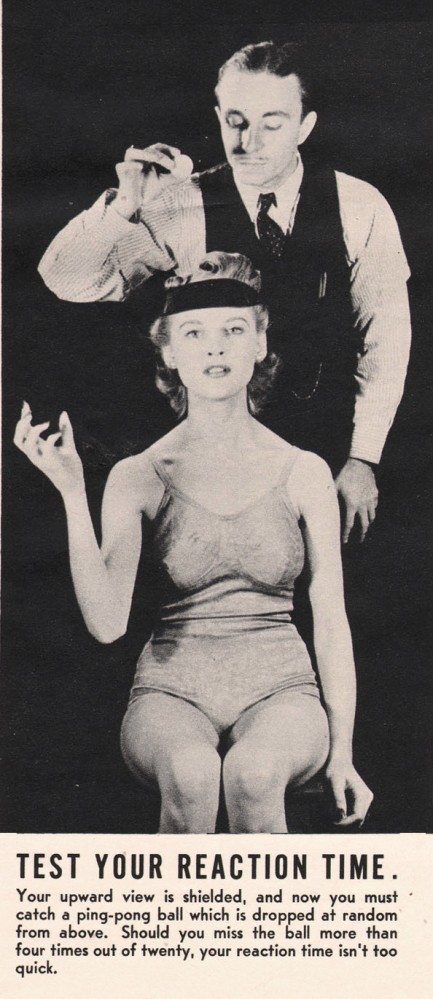 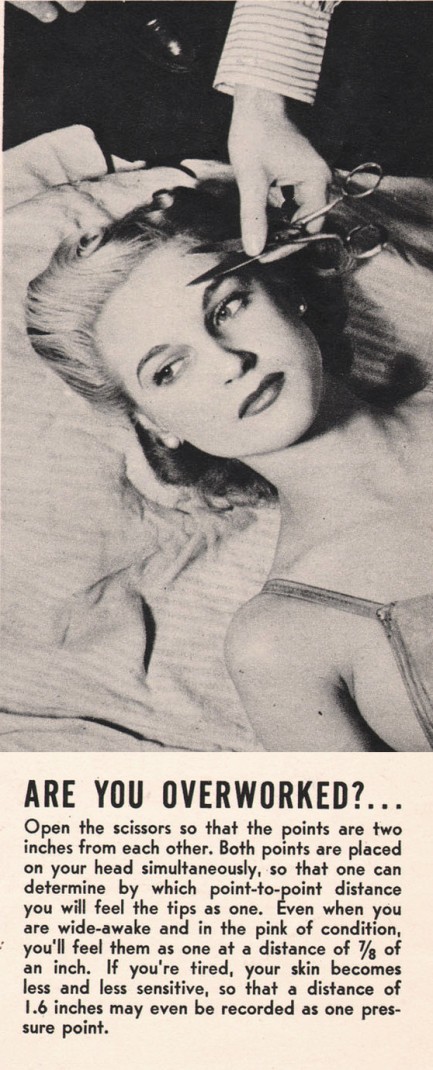 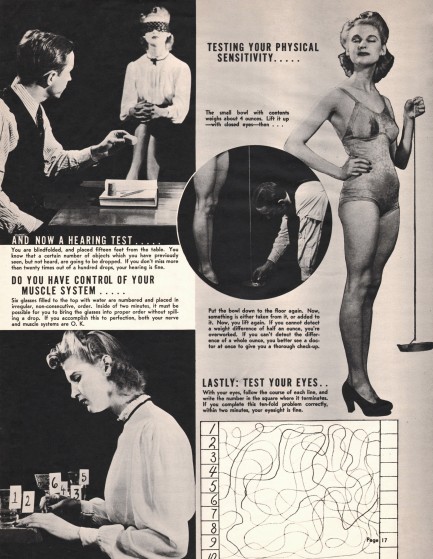 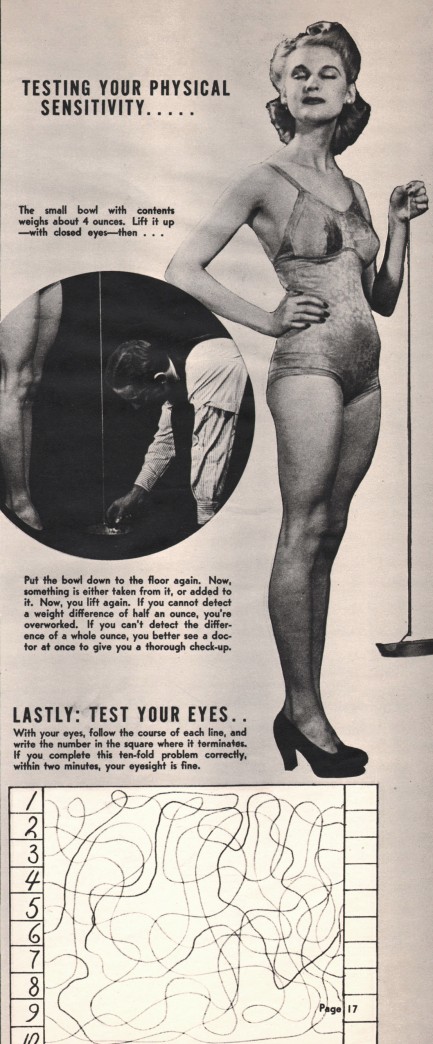 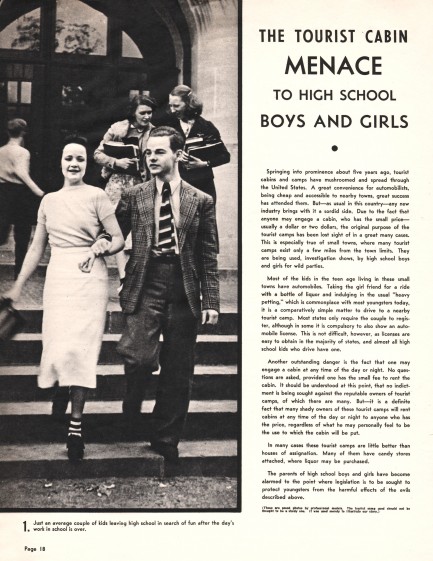 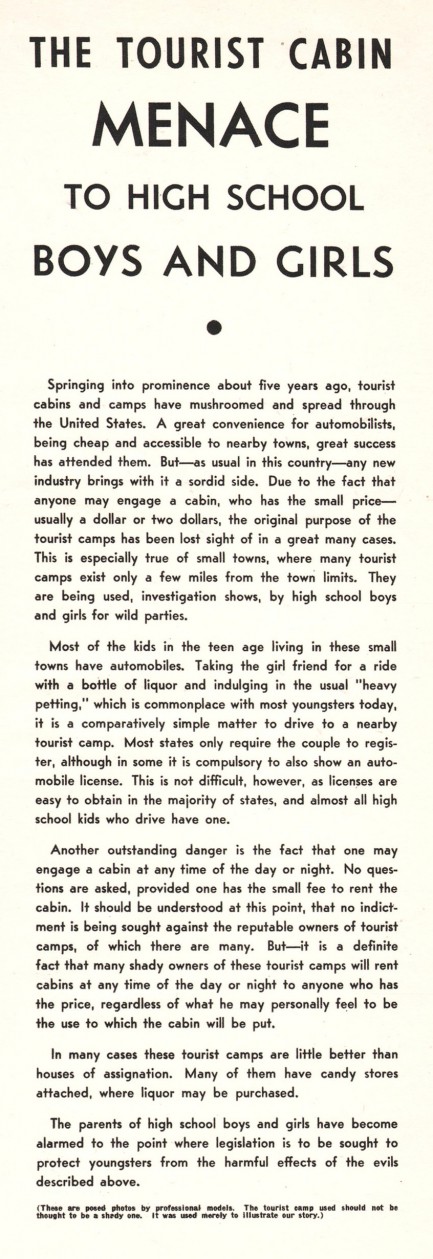 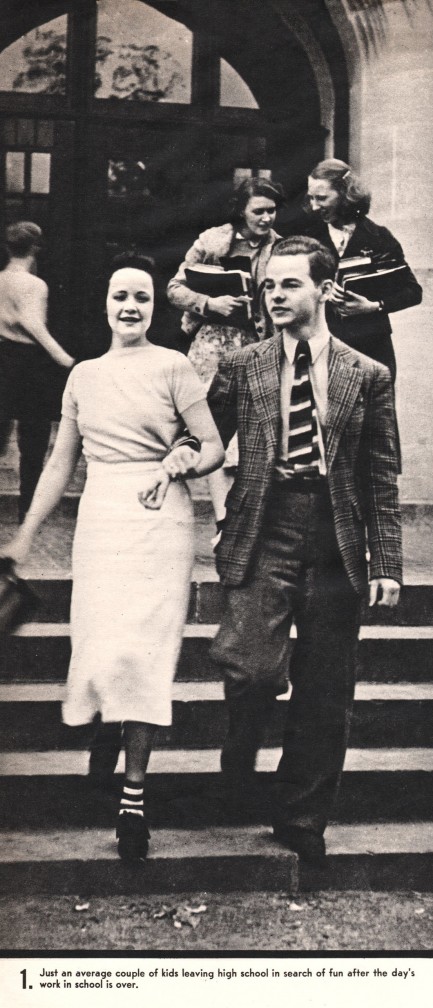  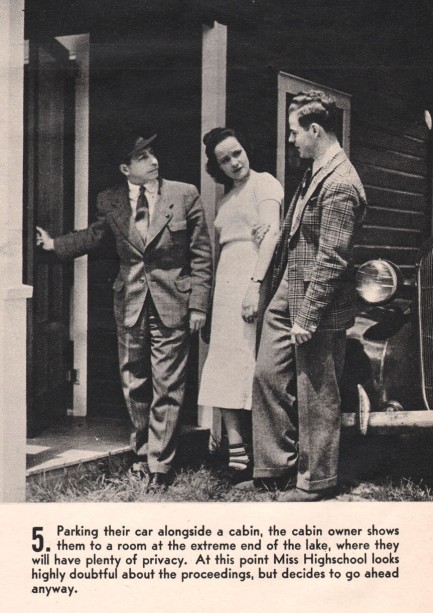 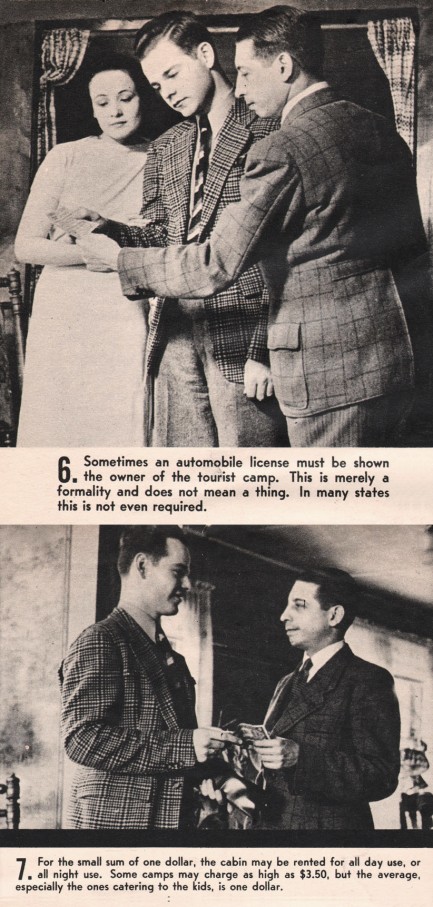   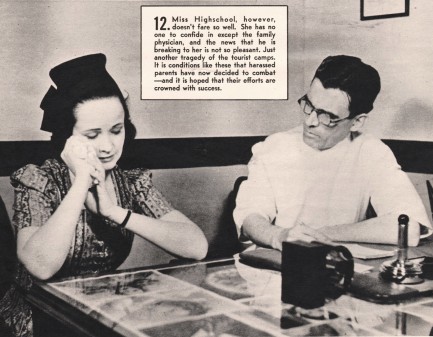 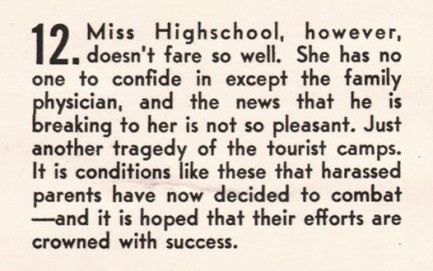 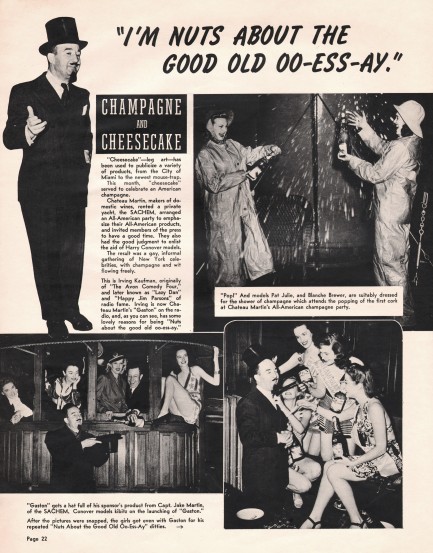 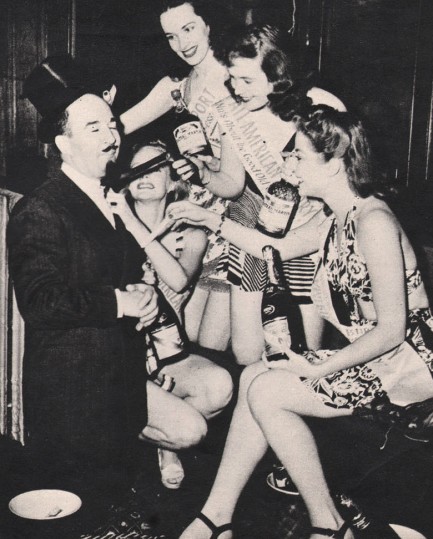 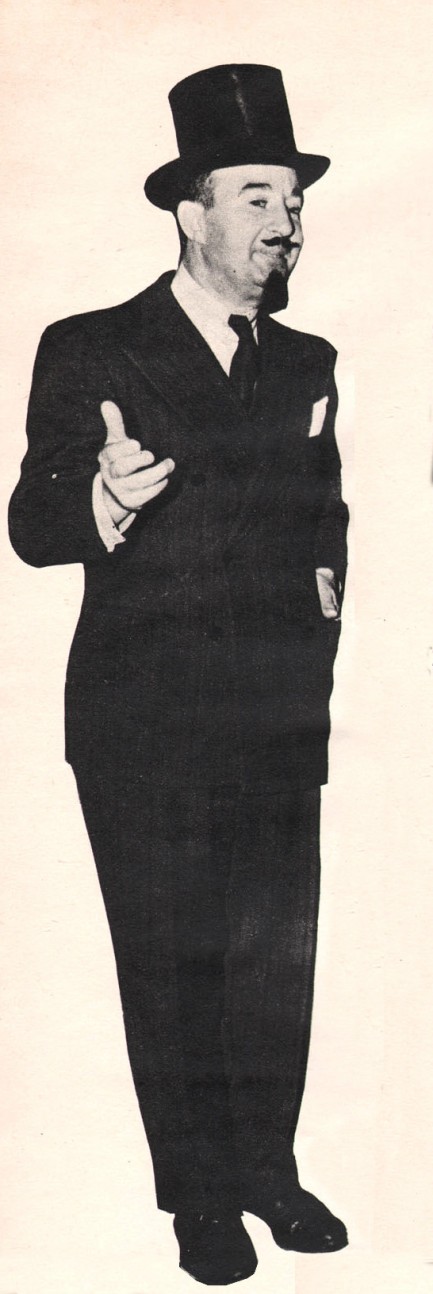 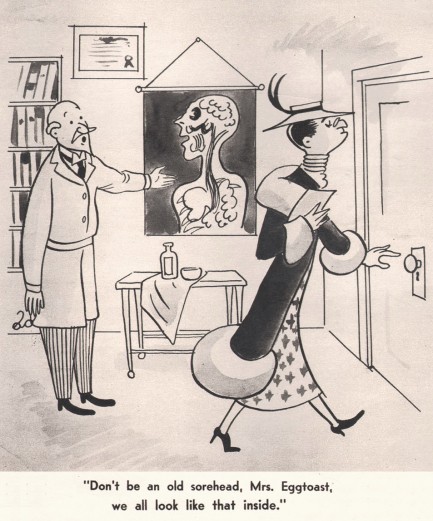 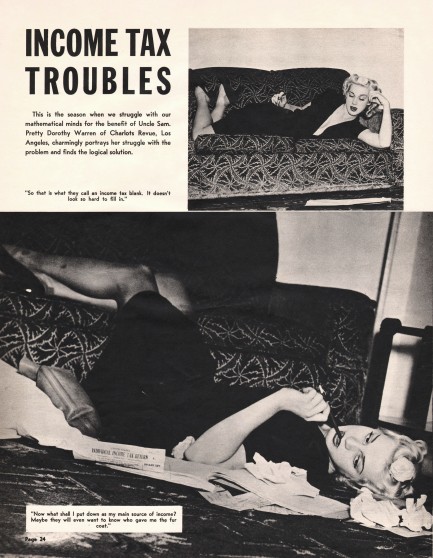 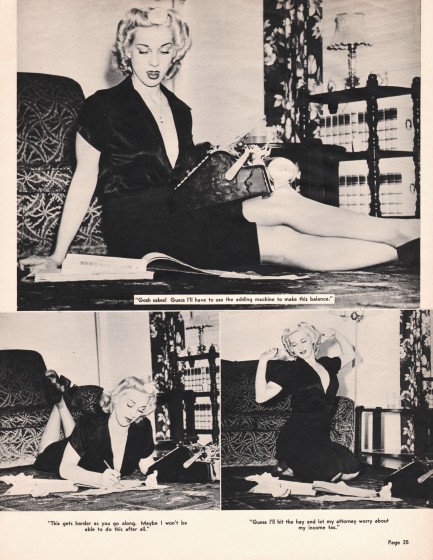 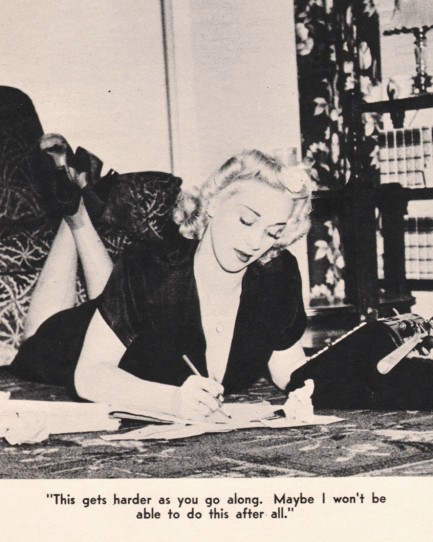 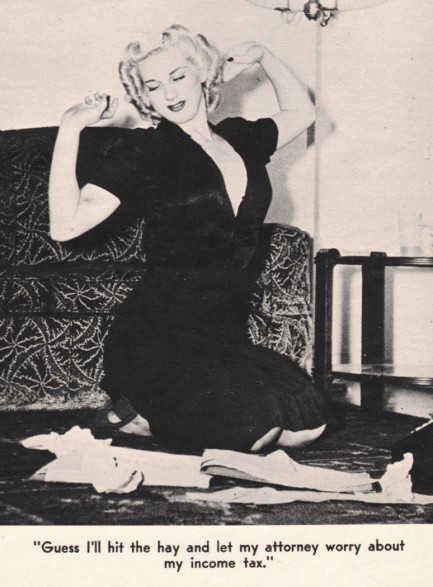 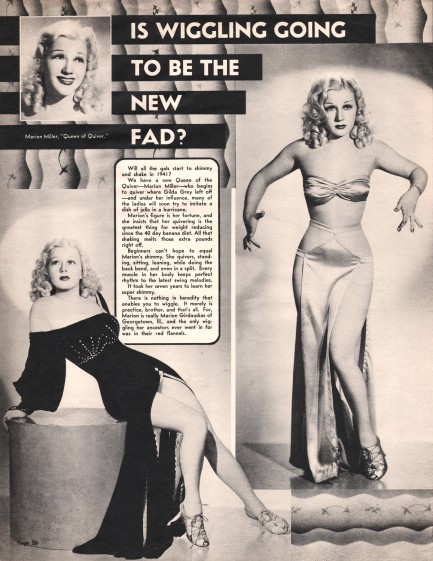 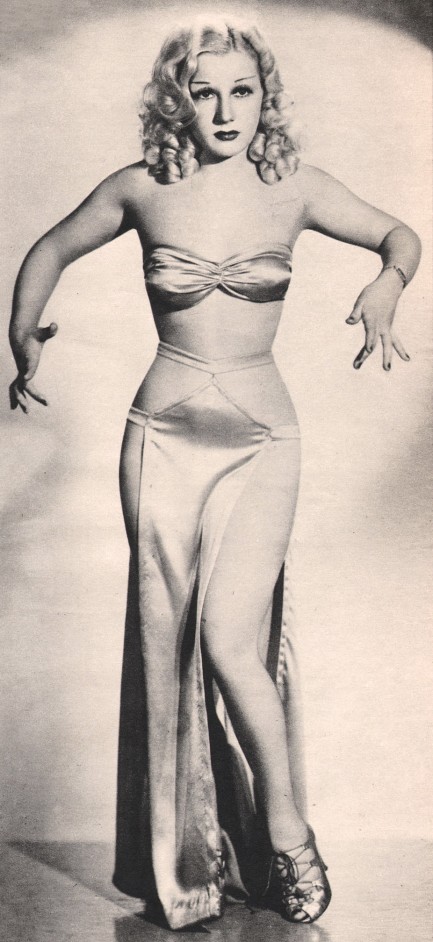 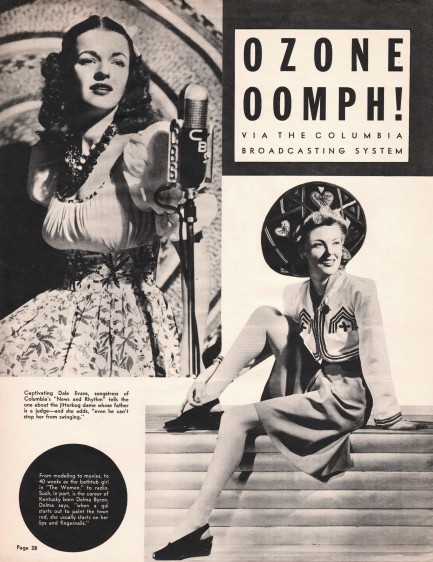 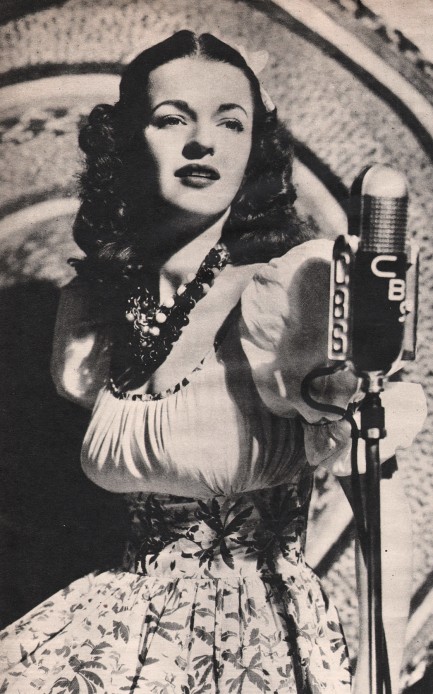 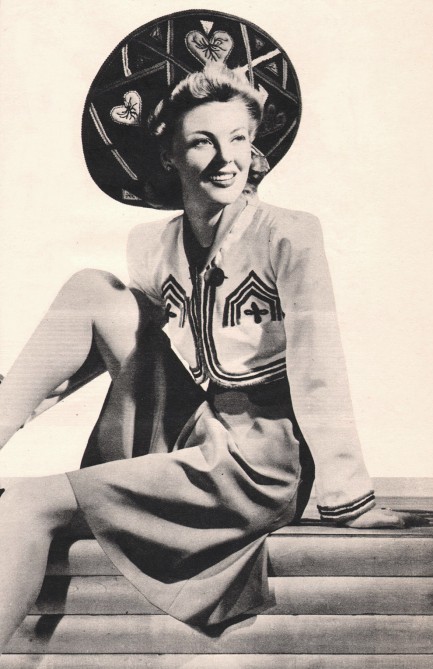 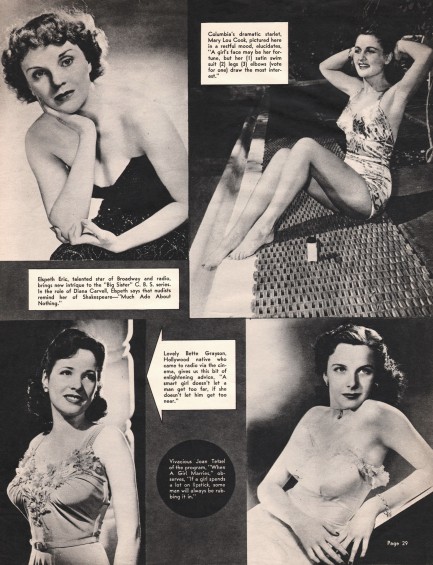 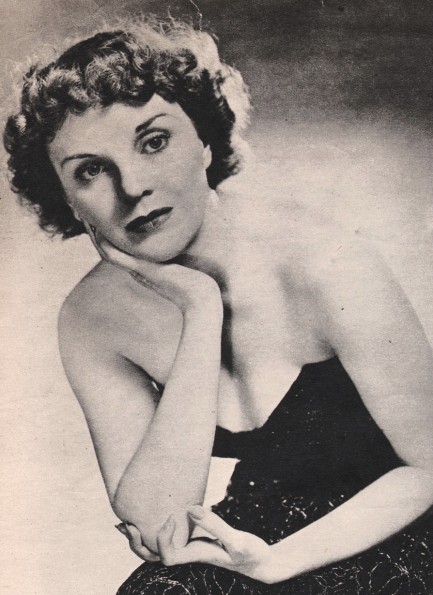 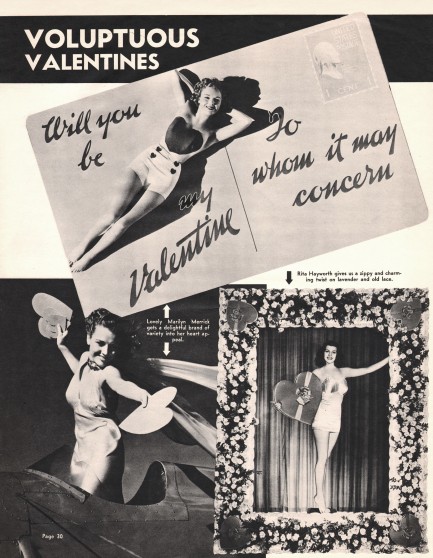 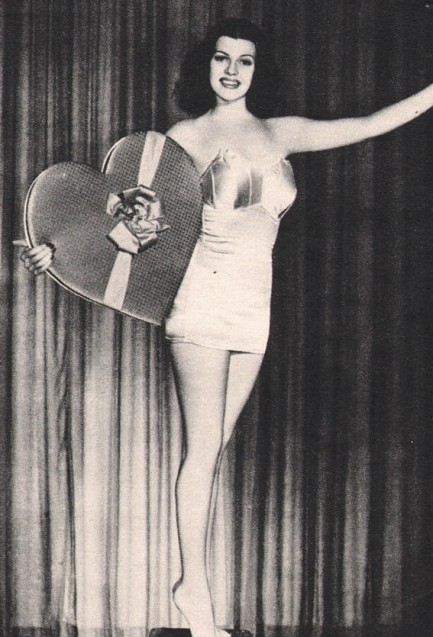
 Rita Hayworth and Gilda get a dose of the northern aesthetic. 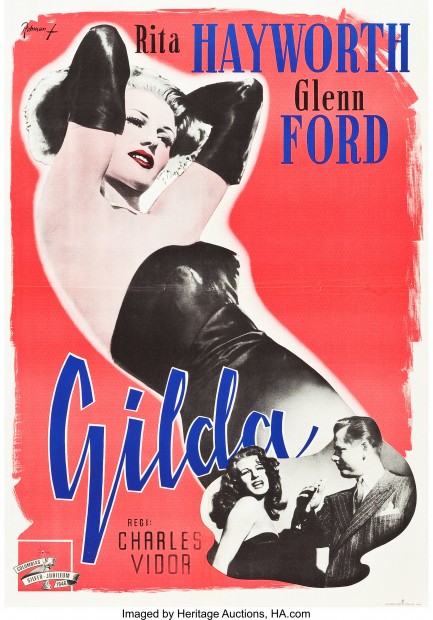
The awesome film noir Gilda premiered in Sweden today in 1946, and above is a beautiful promo for the movie painted by Swedish artist Eric Rohman. In typical Nordic fashion, the overall approach here is clean and understated. One of the most interesting parts of looking at vintage posters is noting the cultural differences in approach. Every country contributes to the art form in unique ways, and all are worthwhile. We often find Swedish posters to be less inspiring than U.S., Italian, Japanese, and French efforts, but this one, in all its simplicity, is a winner, as is the movie.
 Royal Crown helps consumers to stay awake at the movies. 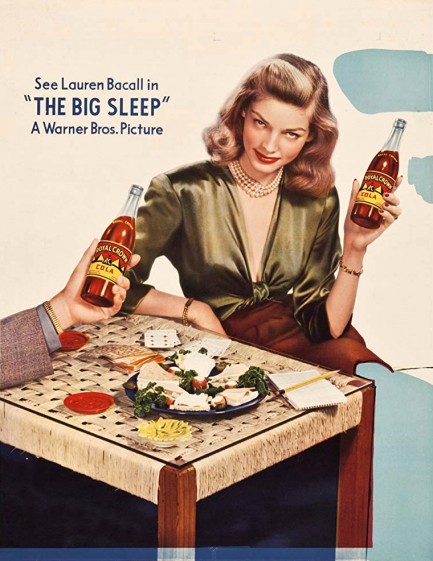
Lauren Bacall brings her special brand of smoky sex appeal to this magazine advertisement for Royal Crown Cola, made as a tie-in with her 1946 film noir The Big Sleep. RC was launched in 1905 by Union Bottling Works—a grandiose corporate name for some guys in the back of a Georgia grocery store. The story is that the drink came into being after grocer Claud A. Hatcher got into a feud with his Coca Cola supplier over the cost of Coke syrup, and essentially launched RC out of equal parts entrepreneurialism and spite. Union Bottling Works quickly had a line of drinks, including ginger ale, strawberry soda, and root beer.
However humbly RC Cola began, the upstart had truly arrived by 1946, because The Big Sleep, co-starring Humphrey Bogart, was an important movie, and Bacall was a huge star. She was only one jewel in the crown of RC's endorsement efforts. Also appearing in ads were Rita Hayworth, Veronica Lake, Joan Crawford, Virginia Mayo, Paulette Goddard, Gene Tierney, Ann Rutherford, Ginger Rogers, and others. Bacall flogged RC for at least a few years, including starring in tie-in ads for Dark Passage, another screen pairing of her and Bogart that hit cinemas in 1947. You see one of those at bottom. We can only assume these ads were wildly successful. After all, it was Bacall.
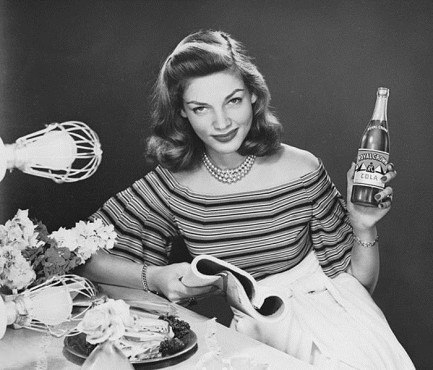 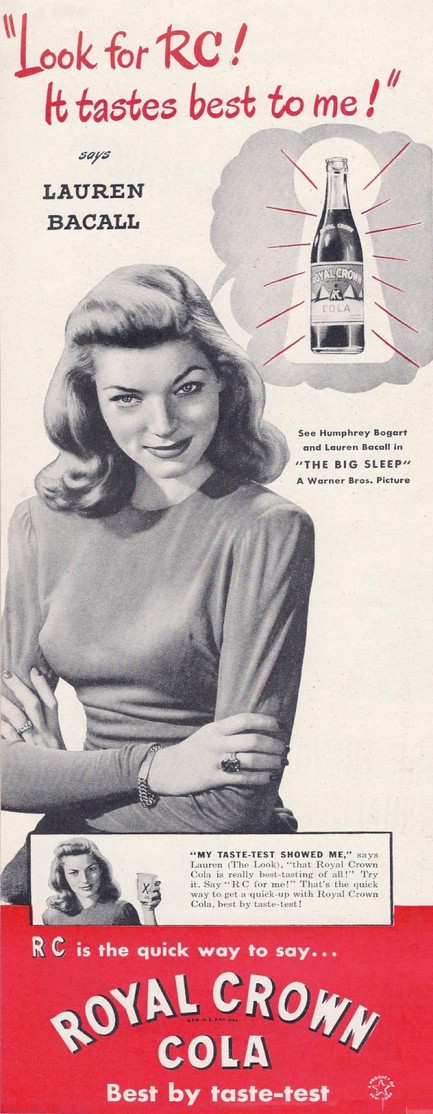 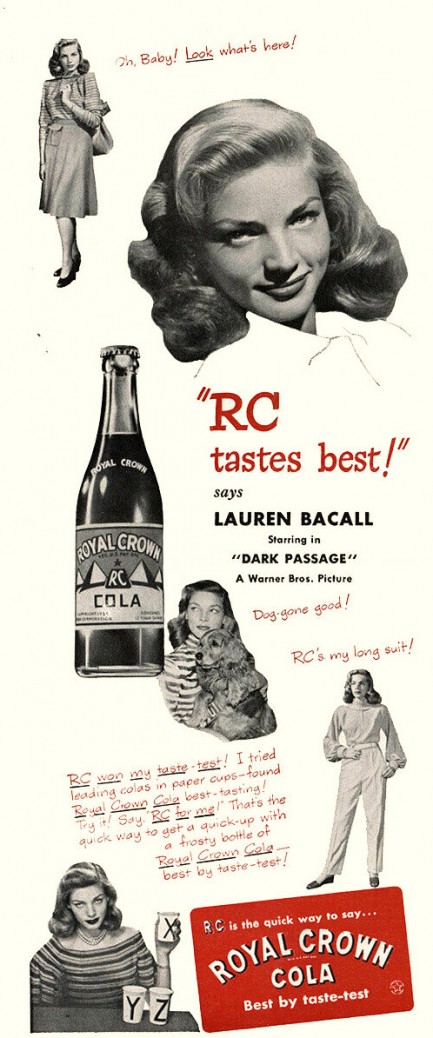

|
 |

The headlines that mattered yesteryear.
1945—Churchill Given the Sack
In spite of admiring Winston Churchill as a great wartime leader, Britons elect
Clement Attlee the nation's new prime minister in a sweeping victory for the Labour Party over the Conservatives. 1952—Evita Peron Dies
Eva Duarte de Peron, aka Evita, wife of the president of the Argentine Republic, dies from cancer at age 33. Evita had brought the working classes into a position of political power never witnessed before, but was hated by the nation's powerful military class. She is lain to rest in Milan, Italy in a secret grave under a nun's name, but is eventually returned to Argentina for reburial beside her husband in 1974. 1943—Mussolini Calls It Quits
Italian dictator Benito Mussolini steps down as head of the armed forces and the government. It soon becomes clear that Il Duce did not relinquish power voluntarily, but was forced to resign after former Fascist colleagues turned against him. He is later installed by Germany as leader of the Italian Social Republic in the north of the country, but is killed by partisans in 1945. 1915—Ship Capsizes on Lake Michigan
During an outing arranged by Western Electric Co. for its employees and their families, the passenger ship Eastland capsizes in Lake Michigan due to unequal weight distribution. 844 people die, including all the members of 22 different families. 1980—Peter Sellers Dies
British movie star Peter Sellers, whose roles in Dr. Strangelove, Being There and the Pink Panther films established him as the greatest comedic actor of his generation, dies of a heart attack at age fifty-four.
|

|
|

It's easy. We have an uploader that makes it a snap. Use it to submit your art, text, header, and subhead. Your post can be funny, serious, or anything in between, as long as it's vintage pulp. You'll get a byline and experience the fleeting pride of free authorship. We'll edit your post for typos, but the rest is up to you. Click here to give us your best shot.

|
|






 Rod Taylor and Luciana Pauluzzi swap subordinate positions for 1967's Chuka.
Rod Taylor and Luciana Pauluzzi swap subordinate positions for 1967's Chuka. Edmund O'Brien goes for the time honored hair grab on Marla English for 1954's Shield for Murder.
Edmund O'Brien goes for the time honored hair grab on Marla English for 1954's Shield for Murder.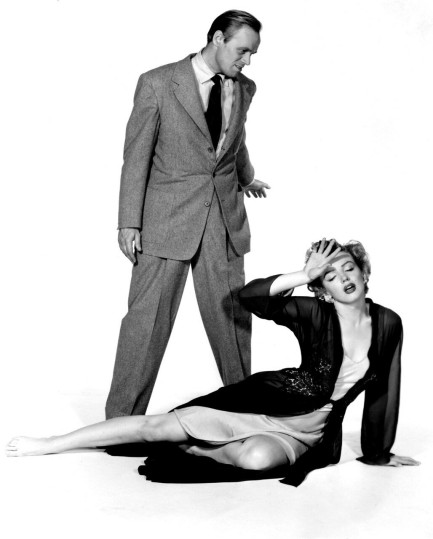 Marilyn Monroe swoons as Richard Widmark snarls for Don't Bother To Knock, 1952.
Marilyn Monroe swoons as Richard Widmark snarls for Don't Bother To Knock, 1952. Inger Stevens and Terry Ann Ross for Cry Terror, an adaptation of a novel we talked about a few years ago.
Inger Stevens and Terry Ann Ross for Cry Terror, an adaptation of a novel we talked about a few years ago. Kim Hunter soothes an overheated Marlon Brando in a promo for 1951's A Streetcar Named Desire.
Kim Hunter soothes an overheated Marlon Brando in a promo for 1951's A Streetcar Named Desire. George Raft menaces Marlene Dietrich in the 1941 comedy Manpower.
George Raft menaces Marlene Dietrich in the 1941 comedy Manpower.
 As promos go, these actually make sense. They show three unidentified models mesmerized by vampire Christopher Lee for 1970's Taste the Blood of Dracula.
As promos go, these actually make sense. They show three unidentified models mesmerized by vampire Christopher Lee for 1970's Taste the Blood of Dracula. Glenn Ford is at it again, this time looming over Rita Hayworth for the 1946 classic Gilda.
Glenn Ford is at it again, this time looming over Rita Hayworth for the 1946 classic Gilda. Aldo Ray and Barbara Nichols for 1958's The Naked and the Dead.
Aldo Ray and Barbara Nichols for 1958's The Naked and the Dead. This one shows less domination and more protectiveness, as Humphrey Bogart prepares to defend Ida Lupino for High Sierra, 1941.
This one shows less domination and more protectiveness, as Humphrey Bogart prepares to defend Ida Lupino for High Sierra, 1941. Humphrey once more. Here he's with Lizabeth Scott for Dead Reckoning, 1947.
Humphrey once more. Here he's with Lizabeth Scott for Dead Reckoning, 1947. This shot shows Brazilian actress Fiorella Mari with an actor we can't identify in a movie we also can't identify.
This shot shows Brazilian actress Fiorella Mari with an actor we can't identify in a movie we also can't identify. Shelly Winters and Jack Palance climb the highest mountain together for I Died a Thousand Times, 1955.
Shelly Winters and Jack Palance climb the highest mountain together for I Died a Thousand Times, 1955. As we said, we didn't find as many examples of kneeling men, but we found this gem—Cappucine makes a seat of director Blake Edwards on the set of The Pink Panther in 1963. Does this count, though? While Edwards is subordinate, he isn't kneeling and it really isn’t a legit promo.
As we said, we didn't find as many examples of kneeling men, but we found this gem—Cappucine makes a seat of director Blake Edwards on the set of The Pink Panther in 1963. Does this count, though? While Edwards is subordinate, he isn't kneeling and it really isn’t a legit promo. And lastly, in a curious example, Hugo Haas seems to tell Cleo Moore to stay in a shot made for 1953's One Girl's Confession.
And lastly, in a curious example, Hugo Haas seems to tell Cleo Moore to stay in a shot made for 1953's One Girl's Confession. 
